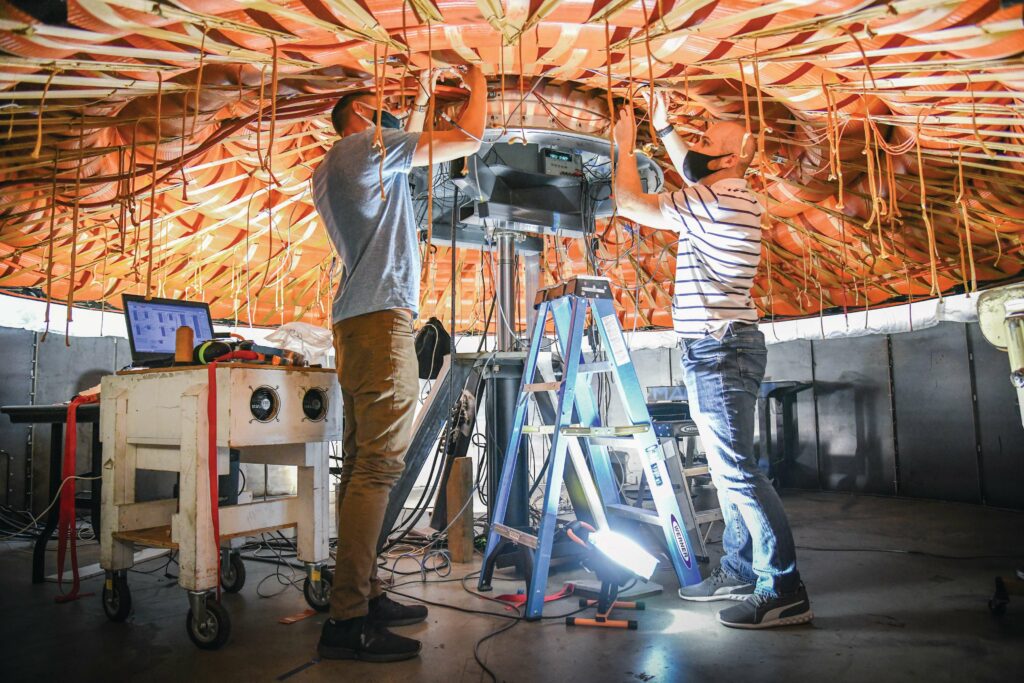
LANGLEY RESEARCH CENTER, VIRGINIA, USA
This structure might be the key to landing experiments, equipment and possibly even people on Mars. And it’s inflatable. But it’s not for cushioning the impact of hitting the planet’s surface; it’s for surviving the heat of atmospheric re-entry.
NASA is developing it as an alternative to the rigid heatshields currently used to protect payloads as they pass through a planet’s atmosphere. The bigger the heatshield, the more heat it can absorb as it generates drag to slow the craft for a safer landing. The problem is, a rigid heatshield’s dimensions are constrained by the size of the rocket it has to fit inside. An inflatable shield, however, can be stowed for launch, then inflated to a larger size when it’s deployed.
This one is six metres wide when inflated, and if all goes well, it’ll have undergone its first test (by re-entering Earth’s atmosphere from low orbit) by the time you read this.